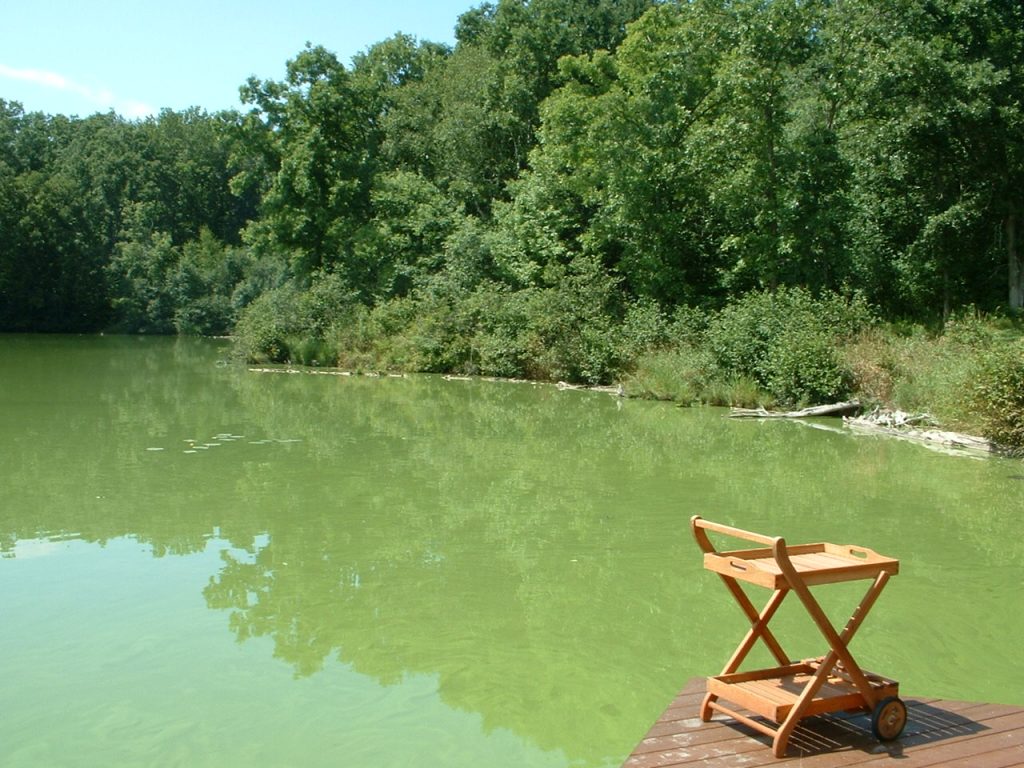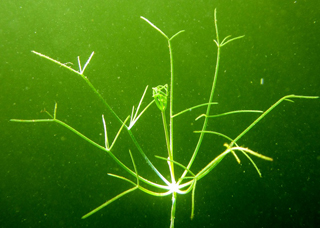Controlling algae is one of the top priorities in pond maintenance. An abundance of algae is unappealing to look at and usually forms green mats on the water’s surface. Depending on the type of bloom, your water can turn green in color or seem to look green due to overgrowth on the edges, bottom and the rocks lining the pond and sometimes give off a foul odor. Small amounts of Algae growth can be good for your pond as “Algae actually performs a necessary and important role, just like any other plant in your pond -that is to absorb nitrates… So, a little bit of algae is alright and it is also a source of nutrition for goldfish and koi” (Pond Clinic, 2013). Keep an eye out though, algae use the Oxygen in your pond to grow and decompose, both which can lead to dangerously low Oxygen levels for your fish.
Common Types of Algae (Lake Restoration Inc, 2020)




Causes of Algal Bloom
Oxygen Depletion
“Algae and cyanobacteria consume oxygen at night (respiration) when there is not light for photosynthesis…[and] if large portions of the algal bloom die off at once, bacteria will start to consume oxygen in order to decompose the dead algae” (Fondriest Environmental, 2014)
The plants and algae in and around your pond use the Oxygen at night when there is no sunlight to allow for the photosynthesis process to take place. In other words, they consume the Oxygen in and around your pond at night. Only respiration takes place in the dark, where “Oxygen is consumed while Carbon Dioxide is released” (Rookie Parenting, 2020), the same Oxygen your fish use to breath, suffocating them. A surplus of algae growth will also deprive your fish of oxygen when bacteria consume it in order to decompose the algae.
Tips:
-Direct agricultural runoff away from your pond, be smart where you set up your drainage pathway.
-Enhance your aesthetic and soil control with added vegetation along the pond banks.
-Remove debris on the bottom and surface of your pond.
-Stay away from toxic algal blooms, like Blue-Green Algae.
-Install an Ultraviolet Light Sterilizer to control algae.

Ultraviolet Light inactivates the DNA of free-floating algae and other contaminants that pose a threat to your pond and fish. Bacteria and viruses lurk in your pond, even when your water seems clear. Ultraviolet light eliminates these harmful pollutants. Aqua Ultraviolet cares about your landscaping water needs and the addition of an Aqua UV Sterilizer will keep your pond clear from algae and your fish healthy!
#lifedependsonwater #aquauv #aquaultraviolet #madeintheusa #aquauvmadeinusa #water #waterfiltration #uvwaterfiltration #followus #koipond #koihealth #fishhealth #cleanpond #algaecontrol #algaeandmypond #uvandmypond #uvandalgae #uvsterilizer #sterilizemypond #ultimallfilter #ultimatefiltration #filtermypond
Sources and Further Readings:
The Pond Clinic. Algae: The Good, The Bad and The Ugly. 2013. <http://pondclinic.com/algae-the-good-the-bad-and-the-ugly/>.
Lake Restoration Inc. Pond Algae Control. 2020. <https://www.lakerestoration.com/t-algae-control.aspx>.
Fondriest Environmental, Inc. 2014 “Algae, Phytoplankton and Chlorophyll.” Fundamentals of Environmental Measurements. <https://www.fondriest.com/environmental-measurements/parameters/water-quality/algae-phytoplankton-chlorophyll/#algae25>.
Rookie Parenting Science. 2020. Photosynthesis And Respiration In Plants. <https://www.rookieparenting.com/do-plants-breathe-science-experiment/>.
